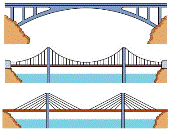Civil and Environmental Engineering
Document Type
Article
Date of this Version
2016
Citation
Published in Journal of Transportation Safety & Security 9:1 (2017), pp. 105–121, doi: 10.1080/19439962.2015.1134741
Abstract
A W-beam to thrie beam stiffness transition with a 102-mm (4- in.) tall concrete curb was developed to connect 787-mm (31-in.) tall W-beam guardrail, commonly known as the Midwest Guardrail System (MGS), to a previously developed thrie beam approach guardrail transition system. This upstream stiffness transition was configured with standard steel posts that are commonly used by several state departments of transportation. The toe of a 102-mm (4-in.) tall sloped concrete curb was placed flush with the backside face of the guardrail and extended the length of the transition region. Three full-scale crash tests were conducted according to the Test Level 3 (TL-3) safety standards provided in AASHTO’s Manual for Assessing Safety Hardware (MASH). The first test, MASH Test No. 3-20, was deemed a failure due to guardrail rupture. The stiffness transition was modified to include an additional nested W-beam rail segment upstream from the W-beam to thrie beam transition element. MASH Test No. 3-20 was repeated on the modified system, and the 1100C small car was successfully contained and redirected. During MASH Test No. 3-21, a 2270P pickup truck was successfully contained and redirected. Following the crash testing program, the system was deemed acceptable according to the TL-3 safety performance criteria specified in MASH.



Comments
Copyright © 2017 Taylor and Francis, LLC and The University of Tennessee. Used by permission.